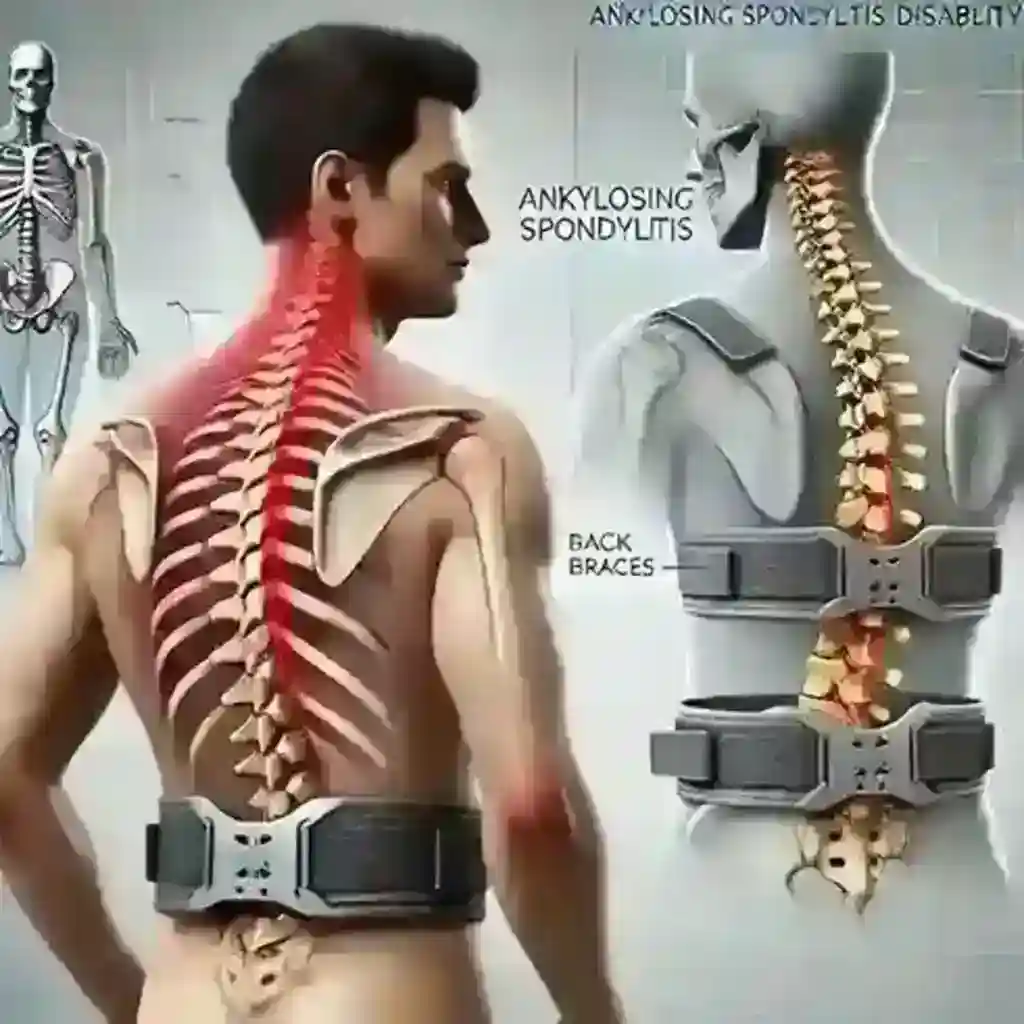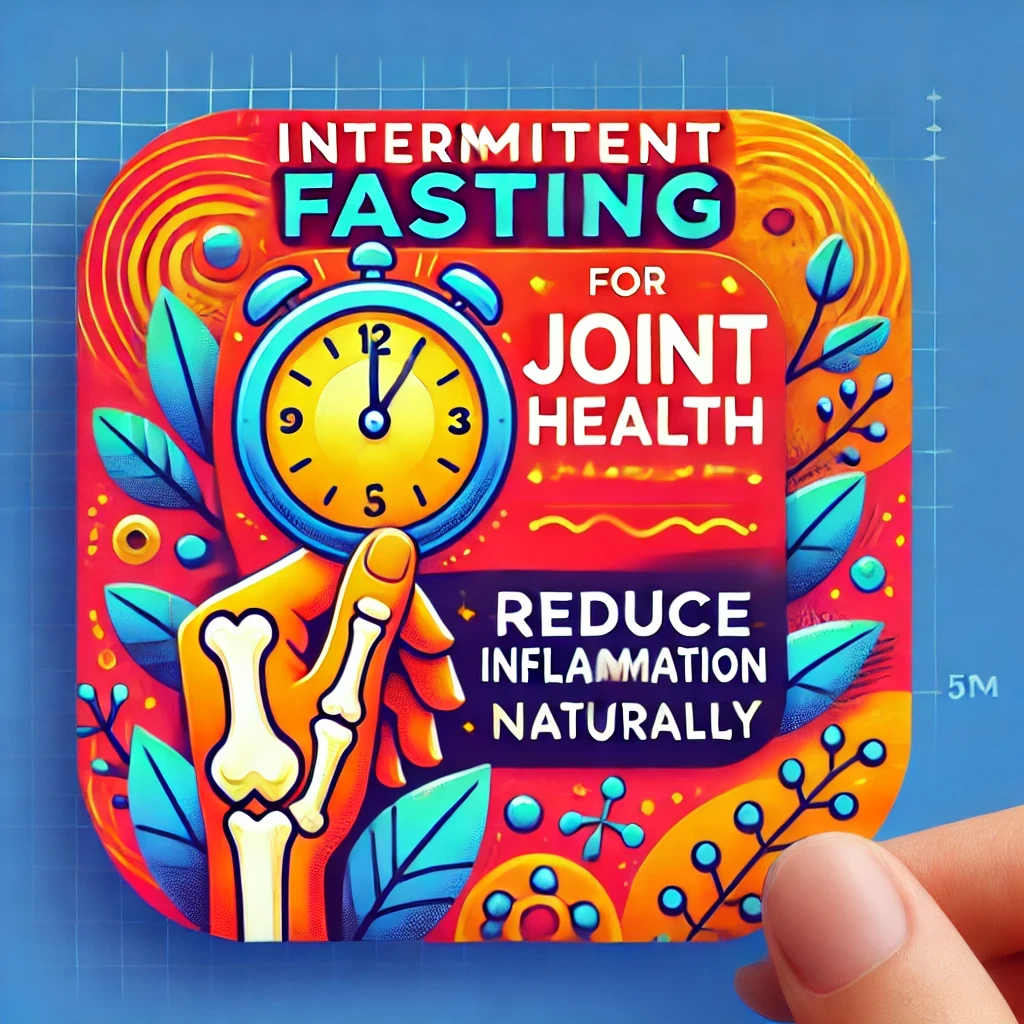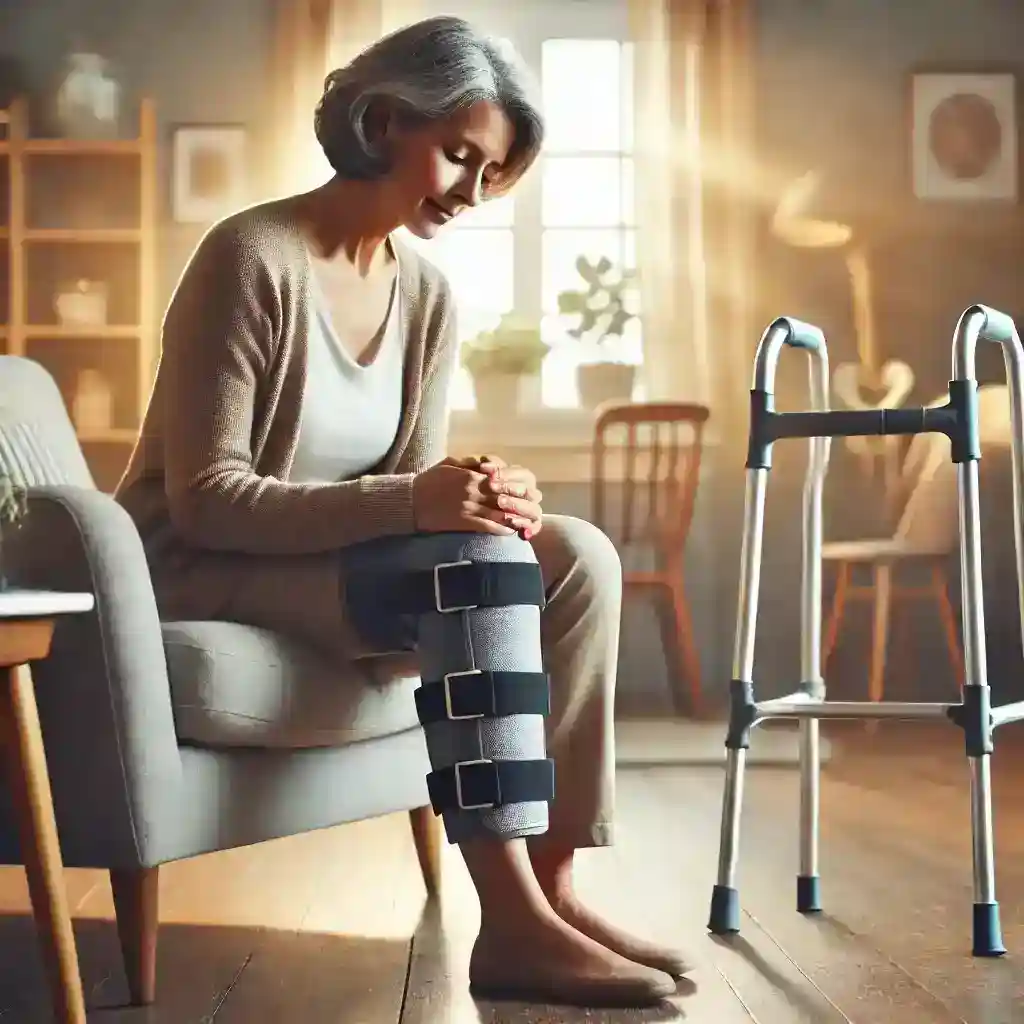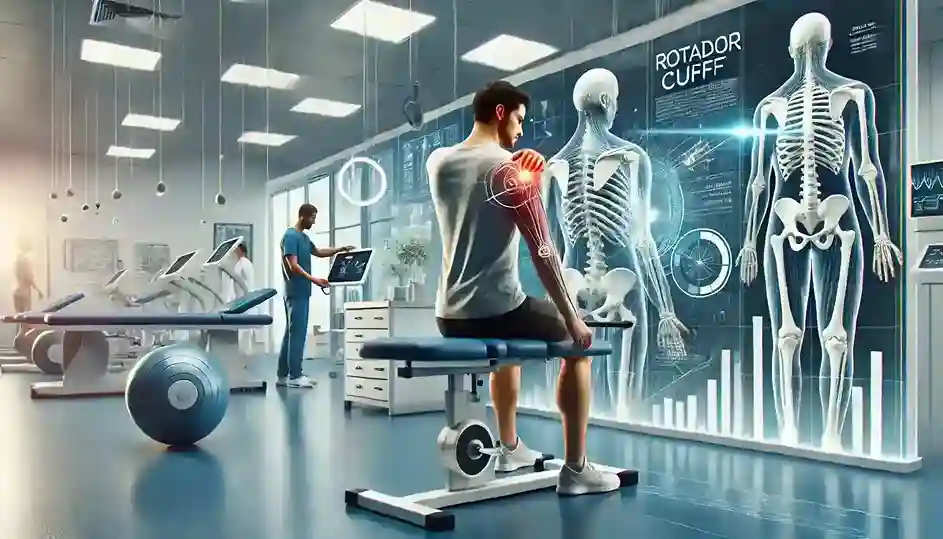
Table of Contents
Shoulder pain can often be debilitating, and one complex condition that affects shoulder mobility is rotator cuff arthropathy. This degenerative condition results from untreated rotator cuff tears, leading to arthritis and joint instability. But what exactly is rotator cuff arthropathy, and how can it be managed?
In this blog, we’ll cover the causes, symptoms, treatment options (surgical and non-surgical), and recovery tips. Additionally, we’ll answer commonly asked questions like “Can a torn rotator cuff heal on its own?” and provide insights into shoulder braces for torn rotator cuff injuries, making this guide informative and actionable.
What Is Rotator Cuff Arthropathy?
Rotator cuff arthropathy develops when a massive rotator cuff tear remains untreated, leading to joint instability and arthritis. The rotator cuff, a group of tendons and muscles that stabilize the shoulder joint, is critical for arm movement. The shoulder joint becomes unstable when the rotator cuff is severely damaged, causing cartilage wear and arthritis over time.
This condition is often seen in older adults or individuals with repetitive strain on their shoulders, such as athletes or those in professions like the Coast Guard, which have high physical shoulder demands.
Symptoms of Rotator Cuff Arthropathy
Furthermore, timely recognition of the symptoms is essential for proper management. Some of the most common signs of rotator cuff arthropathy include:
1. Persistent Shoulder Pain
- Pain that worsens with movement or at night.
- A deep ache in the shoulder that may radiate to the neck or arm.
2. Weakness and Limited Range of Motion
- Difficulty lifting objects or performing overhead movements.
- Loss of strength when performing daily tasks, even with light loads.
3. Shoulder Deformity and Grinding
- Visible deformities like the sinking of the shoulder due to joint instability.
- Grinding or popping sensations during movement.
4. Difficulty with Recovery
If you’re wondering “how to know if you tore your rotator cuff,” persistent weakness, pain, and reduced mobility are red flags. These symptoms often require a professional diagnosis to confirm whether a torn rotator cuff is the culprit.
Can a Torn Rotator Cuff Heal on Its Own?
A frequently asked question is whether a torn rotator cuff can heal independently. Unfortunately, the answer depends on the severity of the injury. Small, partial tears may heal with rest, physical therapy, or using a shoulder brace for rotator cuff tears, such as the best rotator cuff brace available for stabilization and support.
However, healing typically requires medical intervention, such as plasma injections or surgery for complete tears. If left untreated, a rotator cuff tear can progress to rotator cuff arthropathy, causing more severe symptoms and joint damage.
Causes of Rotator Cuff Arthropathy
Several factors contribute to the development of rotator cuff arthropathy:
- Untreated Rotator Cuff Tears: Prolonged damage leads to joint instability.
- Age-Related Degeneration: Common in individuals over 60.
- Repetitive Overuse: Seen in professions like athletes or Coast Guard personnel.
- Trauma: Sudden injuries can trigger long-term joint complications.
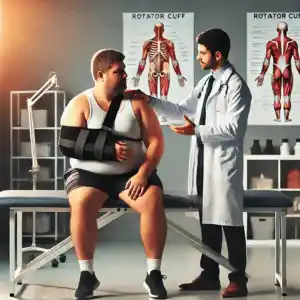
Treatment Options for Rotator Cuff Arthropathy
Treatment depends on the severity of the condition, ranging from non-surgical methods to advanced surgical techniques:
Non-Surgical Treatments
- Shoulder Braces for Torn Rotator Cuff
- A rotator cuff or shoulder brace for rotator cuff tears provides stability and helps reduce strain during movement.
- Popular options include the best rotator cuff brace for pain relief and support.
- Physical Therapy and Exercises
- Exercises like rotator cuff and shoulder pulley help improve range of motion and prevent stiffness.
- Guided therapy reduces pain and strengthens surrounding muscles.
- Plasma Injections
- Rotator cuff plasma injections are a cutting-edge treatment for promoting tissue healing and reducing inflammation.
- Lifestyle Modifications
- Avoid repetitive overhead movements and focus on shoulder ergonomics.
Surgical Treatments
In advanced cases, surgical options may include:
- Arthroscopic Repair of Rotator Cuff Protocol
- A minimally invasive procedure where surgeons repair torn tendons using small tools and a camera.
- Reverse Total Shoulder Replacement
- This surgery is a practical solution for severe arthropathy, as it alters the ball-and-socket configuration of the shoulder joint to compensate for a non-functional rotator cuff.
- Rotator Cuff Surgery Cost
- Surgery costs vary depending on the complexity and location. Consult with specialists to understand your options and plan accordingly.
Recovery Plan for Rotator Cuff Arthropathy
Phase 1: Immediate Post-Surgery Care
- Use a sling to immobilize the shoulder for 4–6 weeks.
- Follow the arthroscopic repair of rotator cuff protocol for a smooth recovery.
Phase 2: Physical Therapy and Exercises
- Physicians are gradually introducing rotator cuff and shoulder pulley exercises to improve range of motion.
- Use a shoulder brace for a torn rotator cuff during the initial stages of recovery to avoid re-injury.
Phase 3: Strengthening and Long-Term Maintenance
- Continue exercises to rebuild strength and mobility.
- Avoid high-impact activities that can strain the joint.
Does a Torn Rotator Cuff Heal on Its Own?
If you’re still wondering, “Does a torn rotator cuff heal on its own?” The answer is complex. Partial tears may improve with proper care, but complete tears often require professional treatment, such as surgery or rotator cuff plasma injections. A rotator cuff brace can provide temporary relief, but long-term recovery typically involves physical therapy and lifestyle adjustments.
Tips to Prevent Rotator Cuff Arthropathy
- Early Diagnosis: Seek help if you experience persistent pain or suspect a tear.
- Use of Shoulder Braces: A shoulder brace for rotator cuff tear can prevent injury from worsening.
- Exercise Regularly: Strengthen your shoulder muscles with rotator cuff and shoulder pulley exercises.
- Avoid Overuse: Rest between intense physical activities to protect the joint.
It’s Time to Take Action
Are you struggling with shoulder pain or suspect a rotator cuff injury? Don’t wait—early intervention is crucial in preventing complications like rotator cuff arthropathy.
At our bracesforpain DME store, we specialize in delivering high-quality and durable products for shoulder conditions. We offer advanced options like rotator cuff plasma injections and arthroscopic repair protocols.
Contact us today and get back to living pain-free!
Final Thoughts
Rotator cuff arthropathy is a severe condition that can impact your quality of life if left untreated. Whether you’re exploring options like shoulder braces for rotator cuff tears or considering surgical solutions, the right treatment plan can make all the difference.
Frequently Asked Questions (FAQ) on Rotator Cuff Arthropathy
1. What is rotator cuff arthropathy?
Rotator cuff arthropathy occurs when a severe rotator cuff tear goes untreated. This leads to shoulder instability and the development of arthritis in the shoulder joint, which can cause pain, stiffness, and difficulty moving the shoulder.
2. What are the common symptoms of rotator cuff arthropathy?
Common symptoms include:
– Pain in the shoulder that worsens with overhead movements or at night.
– Weakness in the shoulder, making it difficult to lift objects.
– Grinding or popping sounds when moving the shoulder.
– Limited range of motion and shoulder stiffness.
3. Can a torn rotator cuff heal on its own?
In some cases, partial rotator cuff tears may heal independently with rest and conservative treatment, such as physical therapy or a rotator cuff brace. However, professional intervention, including surgery or rotator cuff plasma injections, is often required for complete tears to promote healing.
4. What is the best treatment for rotator cuff arthropathy?
The treatment for rotator cuff arthropathy varies depending on the severity of the condition.
It may include:
– Non-surgical treatments like using a shoulder brace for rotator cuff tear to stabilize the joint, rotator cuff and shoulder pulley exercises for rehabilitation, or rotator cuff plasma injections to promote tissue healing.
– Surgical options include arthroscopic repair of rotator cuff protocol or reverse shoulder replacement for severe cases.
5. How much does rotator cuff surgery cost?
The cost of rotator cuff surgery can vary depending on the location, the complexity of the tear, and the surgeon. The average cost of the surgery, including hospital fees, anesthesia, and post-surgery rehabilitation, is $5,000 to $20,000.
6. Should I wear a shoulder brace for rotator cuff tears?
Yes, a shoulder brace for torn rotator cuff can provide support and alleviate pain during movement. It is especially beneficial in the early stages of recovery and can be used with physical therapy and other treatments.
7. What is the protocol for arthroscopic rotator cuff repair?
The arthroscopic repair of rotator cuff protocol is a minimally invasive surgical technique in which the surgeon uses a camera and small tools to repair the damaged tendon. After surgery, patients are typically instructed to wear a sling and begin rehabilitation exercises after a few weeks, as guided by the protocol.
8. How can I prevent rotator cuff injuries?
Preventing rotator cuff injuries involves:
– Strengthening the muscles around the shoulder.
– Using proper lifting techniques.
– Avoiding repetitive overhead movements.
– Wearing a shoulder brace for rotator cuff tear during high-risk activities..
9. Can rotator cuff tears be prevented?
While some rotator cuff tears are related to ageing and degeneration, many can be prevented by avoiding repetitive stress, strengthening shoulder muscles, and using protective gear like the best rotator cuff brace during sports or physically demanding tasks.
10. What are rotator cuff and shoulder pulley exercises?
Rotator cuff and shoulder pulley exercises are therapeutic movements designed to strengthen the rotator cuff muscles and improve the range of motion in the shoulder. They are often recommended as part of a rehabilitation program after a rotator cuff injury.
11. What is the recovery time for rotator cuff arthropathy?
Recovery time for rotator cuff arthropathy depends on the severity of the condition and treatment options:
– Non-surgical recovery: It can take several weeks to months, with physical therapy and supportive braces..
– Post-surgery recovery: For surgical treatments like arthroscopic repair of rotator cuff protocol, it typically takes 6 to 12 months to recover fully, with the first few weeks focused on rest and rehabilitation.
12. Do torn rotator cuffs heal on their own?
Small tears might heal on their own with the right care, including rest, physical therapy, and wearing a rotator cuff brace. However, large or complete tears often require surgical intervention, such as rotator cuff surgery.

